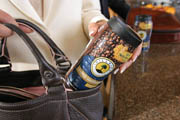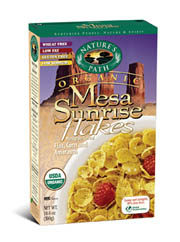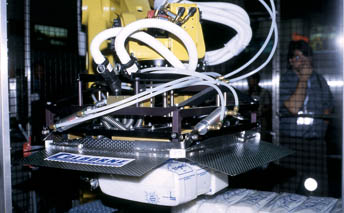
Retailing at under $2 for 10 fluid ounces, the dairy-based coffee inside the can takes a backseat to the package around it. San Diego's OnTech LLC licensed the Puck name to lend the comfort of a familiar brand to its technology, according to Jim Berntsen, OnTech's vice president of sales and a former principal of Ontro Inc.
OnTech is the phoenix that rose from $21 million in ashes left by Ontro, an enterprise founded in 1994 by Berntsen and other developers of the self-heating can. That was Ontro's cumulative debt when it was pushed into receivership in early 2003. Jonathan Weisz purchased Ontro's 102 patent claims, organized OnTech and raised $8 million in venture capital in the last year while securing deals with Sonoco to manufacture the containers and with Lakeside Foods to fill and retort the product. Lakeside has the capacity to manufacture 20 million coffee units a year at its Belgium, WI, plant. The firm hopes to double production capacity by midyear.
"Because of the inner core of the container, you have to slow the line speed a little bit, but nothing dramatic," according to Douglas Quick, Lakeside's president and CEO. "With a plastic container and a metal lid, there are some intricacies in the filling and sealing, and heat processing a container with a liquid core results in very different convection. We're having fun with this."
Sonoco's rigid plastics division manufactures the container, with three injection-molded parts and the metal ends coming from Sonoco's Forest City, NC, plant, and two blow-molded components made in its Wausau, WI, facility, says Grey Moore, marketing associate. Wausau also spin-welds the components and fills the canister with calcium oxide (crushed limestone) and a water-filled bladder before shipping the units to Belgium, 100 miles to the southeast.
Refinements to streamline the six-layer package and make it lighter have been made since a now-invalid production deal was struck with Consolidated Container Co. four years ago, according to Berntsen ("Packages that blow hot and cold," p. 18, Food Engineering, February 2001). When the bladder is punctured, water mixes with the limestone in an endothermic reaction that heats the coffee to 145

Packaged products that deliver greater convenience is an undeniable trend in the food industry, and OnTech's executives have demonstrated their self-heating technology for a decade. Their struggle in bringing it to market should serve as a caution, however, to innovators who believe food's road to fame and fortune is well paved.
For more information:
Douglas Quick, Lakeside Foods,
920-684-3356
James Berntsen, OnTech LLC,
858-486-1945,
james.berntsen@ontech.com
Grey Moore, Sonoco,
843-383-3332,
grey.moore@sonoco.com
Less space, more sales?
Reduced packaging waste was an easy call for Nature's Path Foods, a Canadian organic cereal and snack-food manufacturer. Whether the decision is as healthy for sales as it is for the environment remains to be seen, however.Dubbed the EnviroBox, the Richmond, BC-based firm's new cereal boxes reduce packaging by 10 percent simply by being nine-tenths the size of the boxes they replace. "We are committed to constant innovation, efficiency and waste reduction," explains Arran Stephens, the company's president and founder. "If there are ways for us to reduce our packaging without compromising product quality, we will."


For more information:
John Bogar, Cascades Inc.,
204-654-5650
Squeeze me, please me
If last year's International Baking Industry Exposition is any indication, manual case packing of bread loaves is heading for the ashbin of production practices in America's wholesale bakeries. At least a dozen robotic case packers worked continuously on the convention hall's floor, with nary a single case of carpal tunnel syndrome."The automation of case packing is coming," assures Rick Hoskins, president of Lake Forest, IL-based Colborne Corp. The company featured its eighth bread-handling machine in its booth, and visitors were doing more than gaping at the robot's movements.

Design Engineer Eric Peden handled the integration of a Fanuc robot with Colborne's case packing equipment (the company also works with Adept Technology and other robot suppliers). Unlike conventional packers, which square up loaves with the sides of the unit, the Colborne machine gently squeezes and compresses the load by a preset amount. A case that normally carries eight loaves, for example, might carry 10, reducing shipping and handling costs.
For more information:
Rick Hoskins, Colborne Corp.,
847-371-0101,
info@colborne.com


